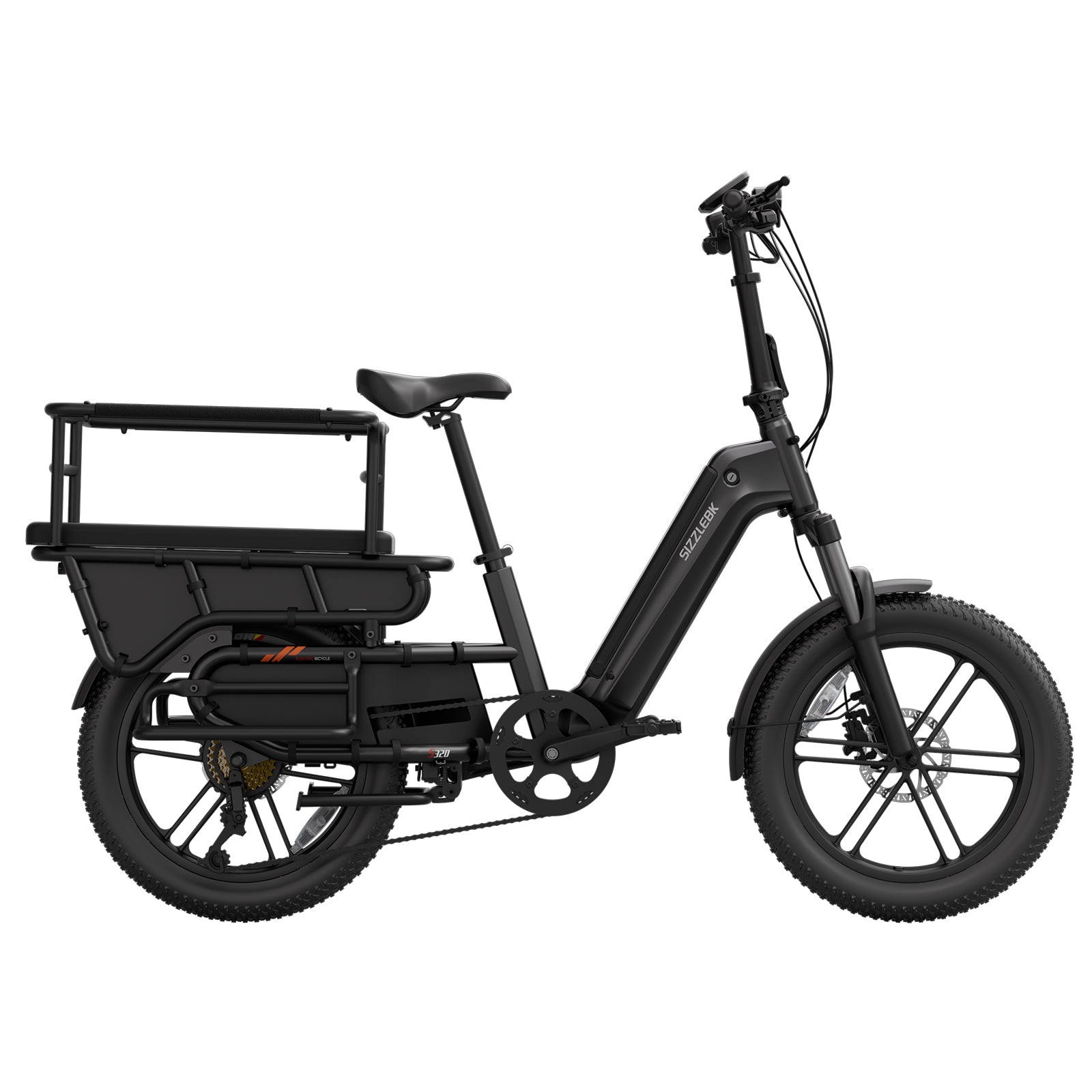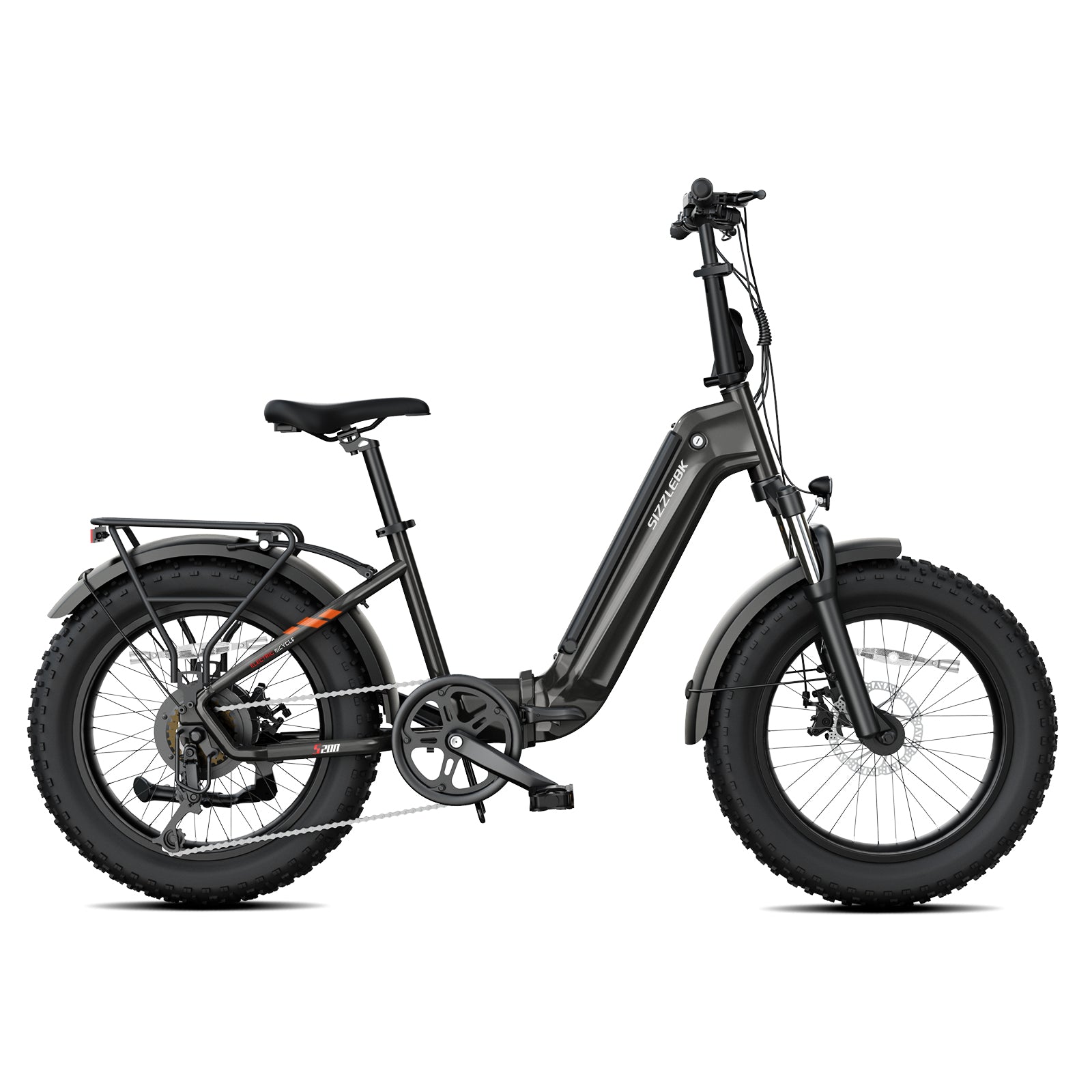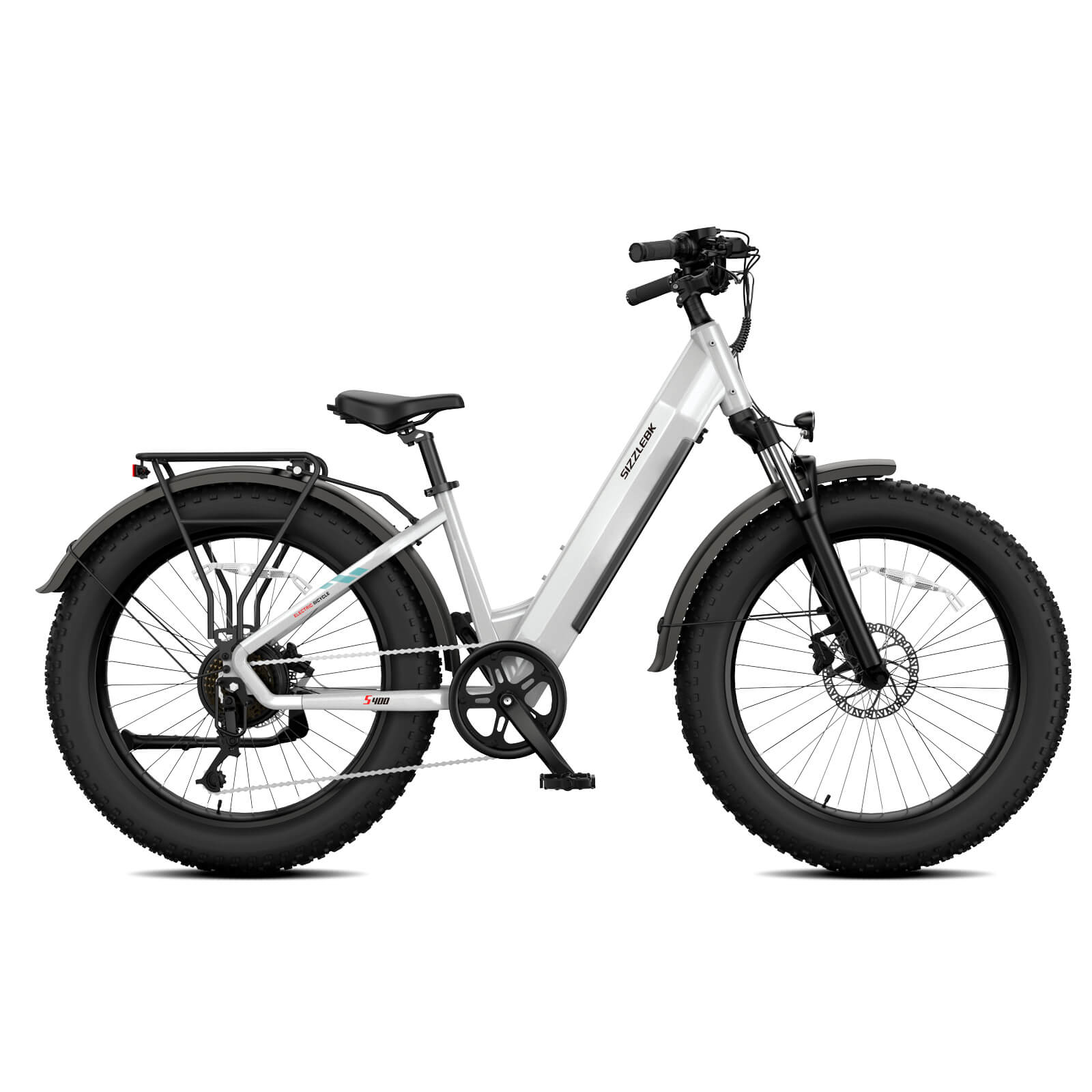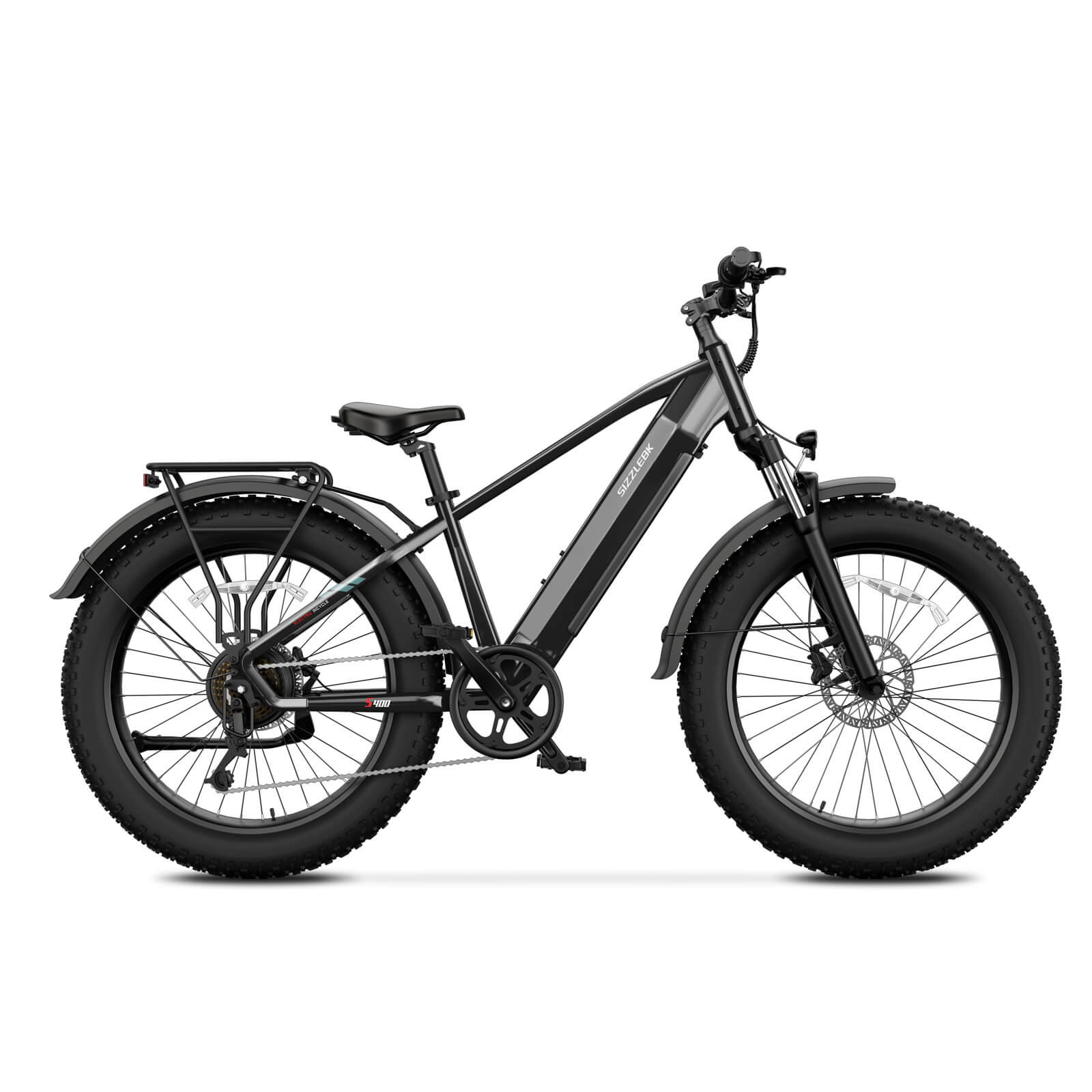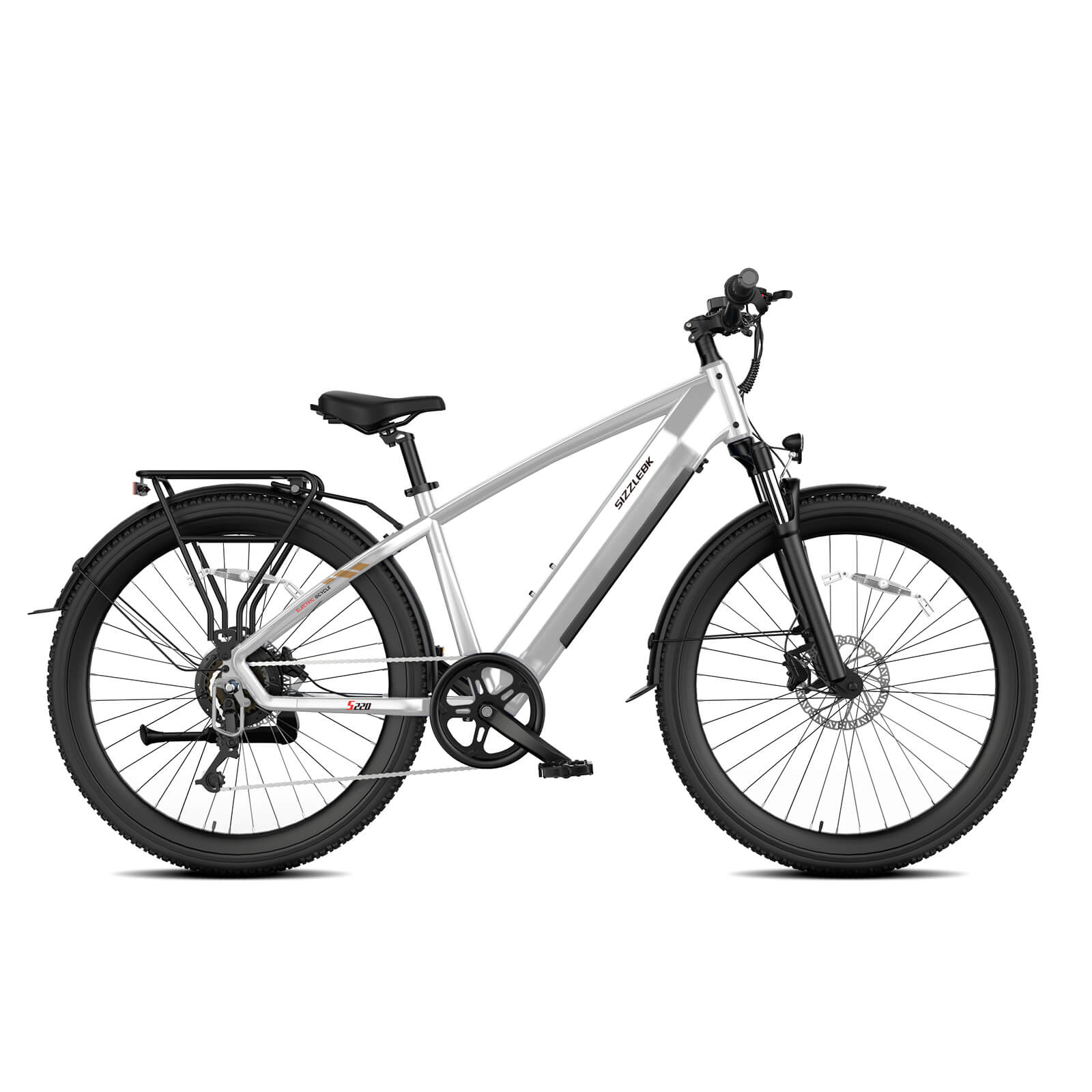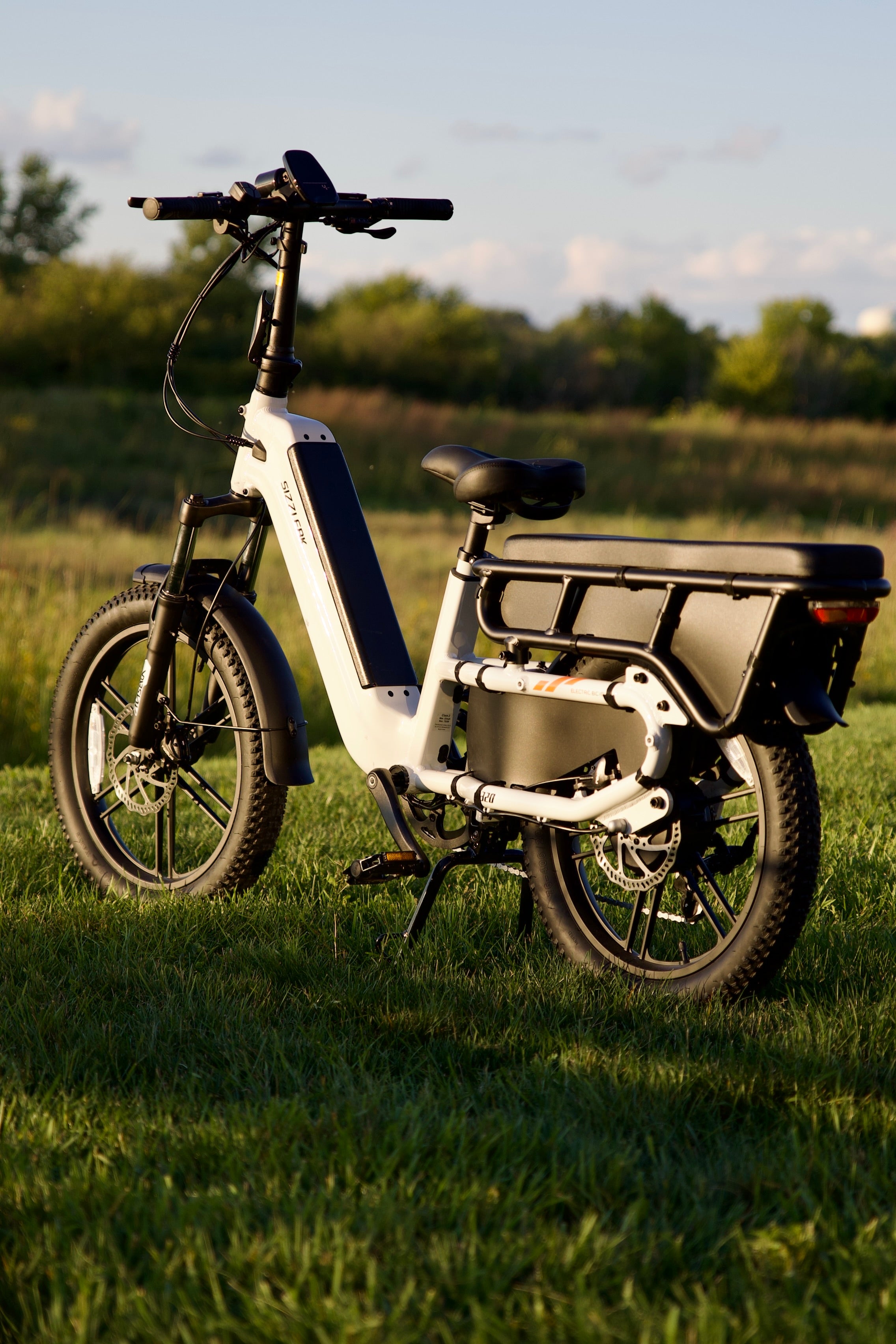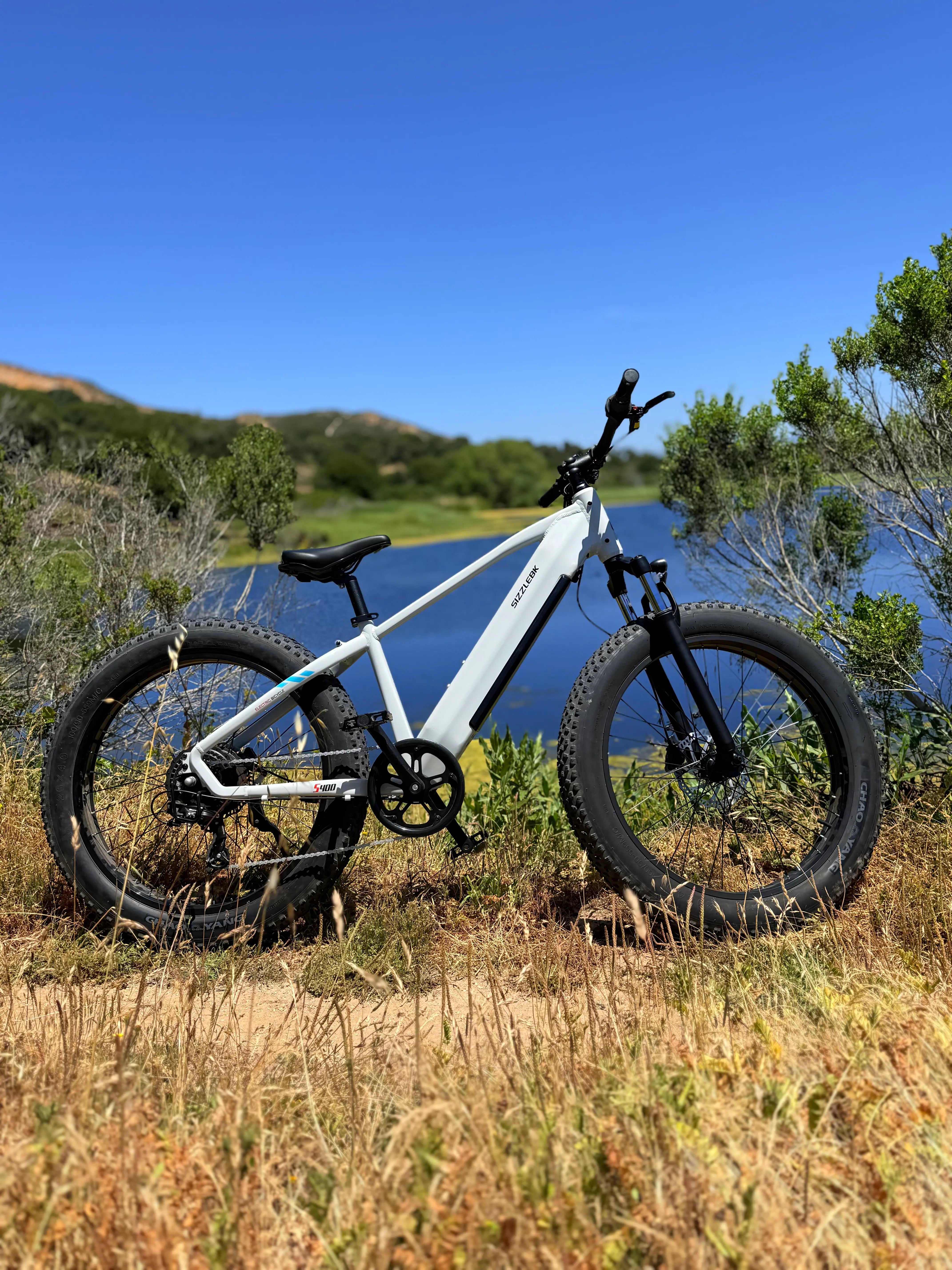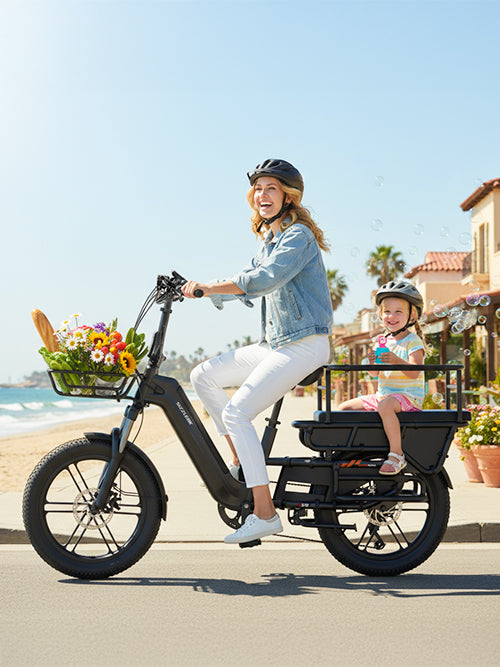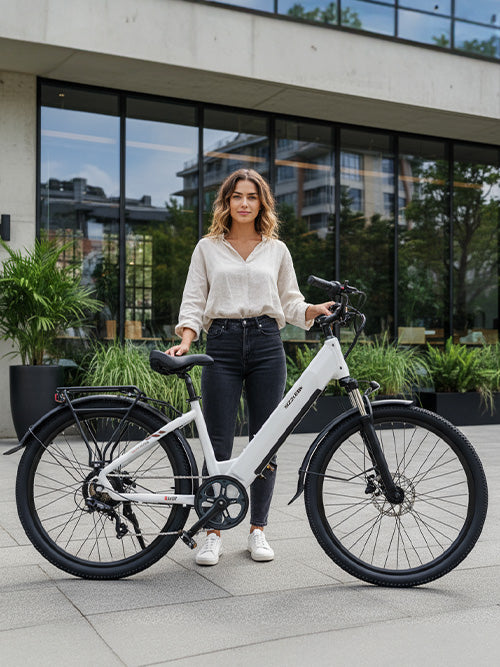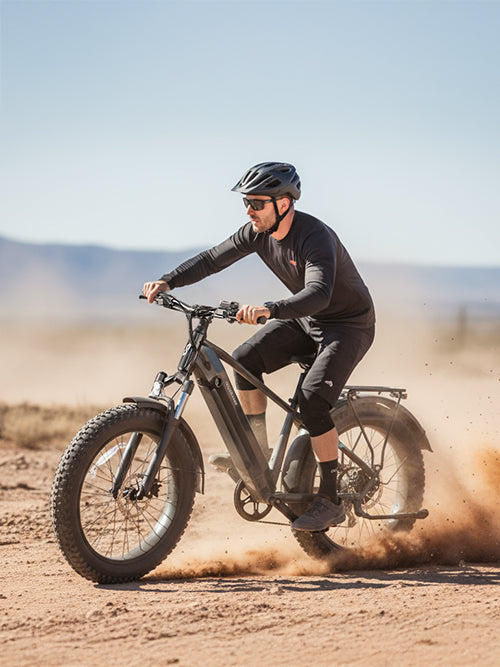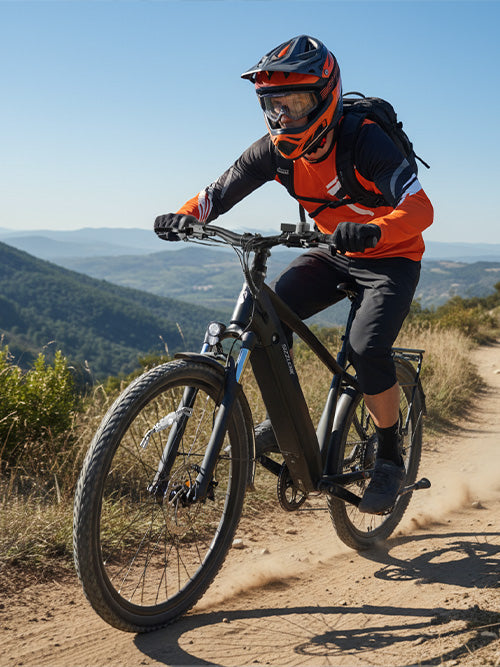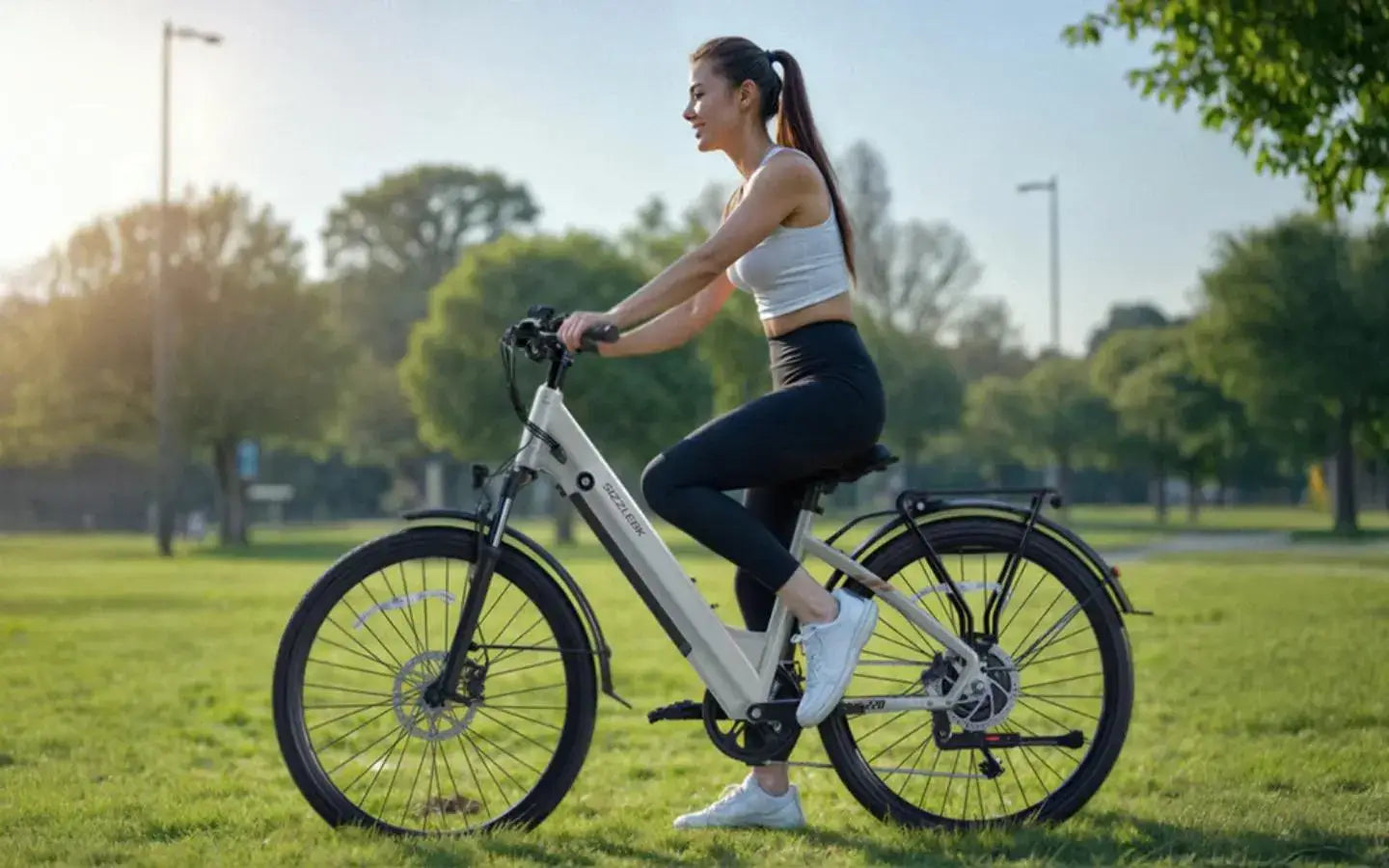In the modern world, electric bikes are here to stay, creating changes in how we ride bicycles, exercise, and commune with nature. There are many types of electric bicycles for consumers to choose from; fat tire electric bikes and standard tire electric bicycles. Each includes potential benefits and attributes that make them their own. Ultimately, it is up to individual requirements, riding areas, and moments of gratification. This guide will compare and contrast fat tire ebikes with standard tire ebikes to help consumers find the best ebike for themselves.
Understanding Fat Tire Ebikes and Standard Electric Bikes
Fat Tire Electric Bikes
Fat e-bike tires are usually 3.8 inches or larger. With their wide tires, comes a larger surface area which gives better traction, more stability, and easier riding for bikes that ride in difficult terrain like snow, sand, or mud. Fat tire e-bikes for beach riding are designed to be ridden with less tire pressure for a smoother ride when riding on different surfaces.
Standard Electric Bikes
General ebikes tires usually range from 1.5 to 2.5 inches. They are lighter and can accelerate to speed more quickly, making them ideal for commuting in the urban arena, nonstop travelling on paved roads. These bikes are beautifully designed as efficient, in and out around cities.
Comparative Analysis: Fat Tire vs. Standard Electric Bikes
1. Terrain Adaptability
Fat Tire E-Bikes: Perform well in snow, sand, gravel, and rocky paths, among other unstable terrains, due to the wide tires that distribute weight evenly, aid in preventing sinking and provide more control on unstable surfaces.
Standard E-Bikes: Suitable for paved roads and bike paths that are relatively flat and gentle. Normal E-Bike tires are narrow, which do not perform well on loose or uneven terrain causing traction and stability concerns.
2. Ride Comfort
Wide Tire E-Bikes: The greater air volume in the tires provides a cushioned ride, absorbing shocks from bumps and rough surfaces, reducing rider fatigue on long rides. Gains can be made in rider comfort on the commute.
Standard E-Bikes: The firmer ride, while sometimes less forgiving on uneven surfaces, is rewarded by a little more responsiveness, making short to medium commutes fun!
3. Speed and Efficiency
Fat Tire E-Bikes: Can be heavy - heaviness affects acceleration, and a electric bike's top speed. The wider tires cause more rolling resistance, and are less efficient on battery.
Standard E-Bikes: Are typically lighter frames and narrower tires - which can provide faster speed and better range, and are typically the best value when comparing to fat tire bikes, so typically more efficient options for a daily commuter.
4. Portability and Storage
Fat Tire E-Bikes: Heavier frame and design often results in additional difficulty when transporting and storing, especially in compact spaces or apartments.
Standard E-Bikes: Rigid frame is made from lean materials and usually weighs less and easier to transport where needed and to store, such as in apartments or small living spaces.
Maintenance and Cost: What You Need to Know About Fat Tire vs. Standard Electric Bikes
Fat tire bikes often have more specialized maintenance due to their larger tires, strengthened frame, and sometimes complex suspension. Riding over rough surfaces like sand, snow, or rocky trails puts obtrusive stress on the bike components. Tires, brakes, and drivetrains. Therefore, regular maintenance becomes key to keeping performance accurate. Fat tire ebikes cost more upfront due to their all-terrain durability and versatility.
However, standard e-bikes for urban commuting are less costly and generally much easier to maintain. They have mechanics that are easier to understand and deal with, an easy set of tires to work with, and a light frame. Most local bike shops will handle regular maintenance of a standard e-bike (ie: tires, brakes, and chain without the need for any specialty tools). If you're a rider looking for the least maintenance cost to ride around town, it's easy to see that lightweight standard e-bikes for apartments come with the amble mix of performance, and practicality.
Real-World Scenarios: Which Electric Bike Is Better for City Riding, Beaches, Trails, or Snow?
What electric bike to get is primarily based on where you will ride it. Fat tire electric bikes and regular electric bikes have their own conclusions with different terrain.
1. If you commute in the city, an electric commuter bike is more suitable. City commuter electric bikes have lightweight frames and tires, are faster, and are easy to maneuver, making them perfect for urban transportation.
2.On beaches, electric fat tire bikes dominate. Wide tires prevent sinking into soft sand, offering excellent traction and control. Models like these ensure a smooth ride along the coastal path.
3.For trail riding, fat tire ebikes again outperform standard models. Their enhanced grip and shock absorption allow riders to tackle rocky, muddy, or gravel surfaces confidently.
4.In snowy conditions, fat tire electric bike for icy roads shine. The extra surface area and ability to run low tire pressure provide superior traction and balance, making them the best choice for winter adventures.
Who Should Choose Fat Tire vs. Standard E-Bike?
Selecting a fat tire e-bike or a standard e-bike depends on your riding goals, terrain preferences and lifestyle needs.
Fat Tire Electric Bikes - Who or What Type of Riders Should Use Them?
Adventure seekers and off-road riders will find fat tire e-bikes ideal, off-road enthusiasts, and those who generally live in variable environments (sand, snow, or rugged trails). If you like to ride off the pavement (in the woods, on the beach, and cross country trails), a fat tire bike ultimately offers the traction, stability, and ruggedness you need. Fat tire bikes excel in comfort for long rides—their wide tires absorb shocks better than lightweight e-bikes. The Sizzlebk S400 Fat Tire Ebike is equipped with a 1300-watt peak motor and puncture-resistant wide tires, making it easy to handle rugged mountain roads and beaches.
Standard Electric Bikes - Who or What Type of Riders Would Use Them?
Standard e-bikes for city commuting best serve urban commuters, recreational riders, and fitness riders primarily on paved roads and city bike lanes.If lightweight and speed are your priorities and you're fairly careful with battery use, then the electric commuter bike is a great option. Electric bikes for commuting are the ideal style for just commuting to work each day, doing some short errands in town, and rides on paved trails on the weekend. The compact size of the commuter ebike makes it easier to store if you live in an apartment or smaller place. The Sizzlebk S220 City Ebike combines stylish appearance and powerful performance, making it very suitable for road riding.
Conclusion
Deciding on purchasing either fat tire or regular electric bike, depends on your needs and riding conditions. A fat tire electric bike gives you comfort and stability when riding off-road, while a standard ebike will provide you a lightweight and efficient ride on the street, If your riding situation is more urban, a standard e-bike. Before selecting the ebike, ask yourself the following questions. Where are you planning on riding? Is comfort greater than speed for you? What are your storage needs? If you think about the above questions before you purchase an electric bike, you can be able to figure out what the best electric bike is for you and your specific riding style and enjoy every ride!
